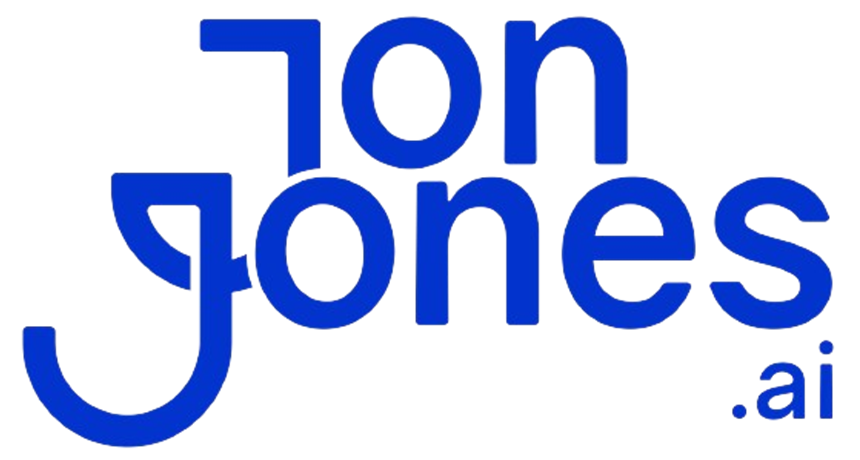Ever feel swamped by busywork while growth stalls?
Manual tasks gobble up nearly 30% of your team’s time, draining your budget and morale.
Okay, let’s dive in. In this post, we’ll share seven simple automation tips. We’re talking about turning repetitive chores into a smooth digital workflow, like setting up a coffee maker and walking away.
You’ll learn how workflow platforms (tools that guide tasks step by step), RPA bots (software that mimics human clicks), and AI modules (smart helpers) join forces. They speed up approvals, cut mistakes, and free you and your crew for the projects that really move the needle.
Ready to hit peak efficiency?
Fundamentals of Business Process Automation

When you ask “what is BPA?” you’re talking about business process automation (using technology to automate routine tasks). You know those repetitive to-dos your team tackles by hand? BPA breaks each step into a digital workflow so work hands off automatically, no more chasing emails or juggling spreadsheets.
At its core, BPA leans on a few key players. Workflow software guides tasks from start to finish. RPA bots (robotic process automation, or software “workers”) mimic clicks and form-fills to handle grunt work. AI modules (programs that learn and make smart decisions) add a layer of brainpower. ML models (machine learning, algorithms that spot patterns) help the system improve over time. Studies say about 30% of U.S. work activities could be automated, imagine your team free from busywork and cycle times cut in half.
Here’s what you get when you add BPA:
- Faster task completion with almost no manual effort
- Lower labor costs as bots pick up routine work
- Fewer errors since rules stay consistent every time
- Easy scaling when transaction volumes jump
- Speedy approvals and handoffs across teams
- A smoother customer experience with reliable, on-time service
Shifting to automation moves you out of daily firefighting and into real optimization. You’ll spot bottlenecks in real time and tweak processes based on solid data. Once your workflows run like clockwork, your team can spend brainpower on growth, no more paperwork hunts.
Results matter. BPA helps you outpace competitors by delivering better outcomes, faster and at lower cost.
Core Components and Technologies in Business Process Automation

We kick things off with a workshop to map every task and handoff (when work moves from one person to another). We sketch each step, from invoice arrival to manager approval, on a whiteboard or digital flowchart. We note who passes work along, what info moves, and when each step starts. This simple exercise uncovers hidden delays and shows where automation can help the most.
For instance, in our first session we mapped the vendor onboarding steps and found a two-day wait before identity checks.
Next, we pair tasks with the right automation tools. We send simple, rule-driven chores to robotic process automation (RPA) platforms (software robots) and route exceptions to AI decision modules (systems that make choices based on data). We document each trigger point, data input, and output for every bot and model. Then we build error-handling paths so the system escalates to a human only when it really needs help.
Example: Set your bot to flag invoices over $10,000 for manager review, then auto-file the rest in your accounts payable folder.
Finally, we tie everything into your enterprise resource planning (ERP) or customer relationship management (CRM) system. We connect via application programming interfaces (APIs) or middleware (glue software) so data flows without any gaps. Then we build dashboards that show cycle times, error rates, and throughput in real time. We also set up alerts for performance dips and tweak rules or retrain models (teaching AI with new data) on the fly.
Example: In NetSuite’s API settings, map the “Invoice Approved” event to feed your business intelligence (BI) dashboard and watch cycle times drop.
Top Business Process Automation Platforms and Vendor Comparison

Picking the right tool starts with clear criteria. We look at ease of use and low-code/no-code (building solutions with little to no coding). We want connectors that plug into your current software stack. Document management and user permissions (control who sees or edits what) are must-haves. We also check G2’s Digital Process Automation Grid (a chart of user reviews) for real-world scores on usability, support, and feature depth.
Deployment style can make or break your rollout. Do you need cloud hosting, on-premises servers, or a hybrid mix? You’ll find both SaaS (software as a service) and open-source platforms. Think about what fits your team’s tech skills and your growth plans.
| Vendor | Deployment Model | Key Features |
|---|---|---|
| UiPath | Cloud, On-Premises, Hybrid | Robotic process automation, AI integrations, marketplace connectors |
| Microsoft Power Automate | Cloud, On-Premises | Pre-built workflow templates, Teams & 365 integration, 400+ connectors |
| Nintex | Cloud, Hybrid | Document management, drag-and-drop process design, role-based permissions |
| Camunda | On-Premises, Cloud | Open-source workflow engine, BPMN modeling, developer APIs |
When you compare these BPA (business process automation) platforms, keep your team’s skill level in mind. If you want enterprise-ready workflows with minimal coding, Power Automate or Nintex could fit. For more control and custom integrations, Camunda shines. In the end, weigh total cost, support, and community activity before you decide.
Business Process Automation Use Cases Across Departments

When you’re drowning in invoices and expense reports, process automation (software that runs routine tasks on its own) is a total lifesaver. Finance teams can auto-process invoices, get approvals in minutes, and send reimbursements without chasing anyone. That cuts data errors, slashes cycle times, and lets your staff tackle higher-value projects. With automated ledgers and on-time reconciliations, you’ll hit month-end closes every single time.
HR feels the relief, too. We set up a digital onboarding flow so new hires breeze through paperwork, badge requests, and benefit sign-ups. No more stacks of forms or follow-up emails.
Customer service teams love it. Automation captures leads, scores them, and kicks off onboarding emails plus task reminders, consistently, every time. That means faster replies and crystal-clear visibility across the team. Nice.
Want the full scoop? Check out these examples of business process automation.
Supply chain and logistics get smart, too. When stock dips below your reorder point, the system pings the warehouse, issues purchase orders, and updates inventory everywhere. Compliance teams build audit trails that log every approval, no scribbled notebooks needed. You end up with real-time tracking, iron-clad records, and far fewer stockouts.
Marketing and IT aren’t left out. Marketers schedule email campaigns with drag-and-drop builders that target the right audience and track opens automatically. IT ops use workflows for incident management, routing tickets and escalating based on severity.
Healthcare pros jump on board with appointment schedulers and claims-processing bots that speed up referrals and billing.
Across every department, process automation means faster work, fewer mistakes, and happier teams. You’ll wonder how you ever managed without it.
Steps to Implement Business Process Automation Successfully

Let’s start by defining clear goals for BPA (business process automation, or automating those repetitive tasks you hate). You might aim for faster approvals, fewer mistakes, or stronger audit trails. Next, map out each workflow step with process mapping (a simple task-and-handoff diagram) so nothing slips through the cracks.
We’ll help you decide which tasks stay human and which bots can take over. Next, score each step on volume, frequency, and error risk so you tackle the biggest wins first.
Now we build your requirements list with features like API connectors (links between apps), low-code design boards (drag-and-drop builders), and real-time alerts. We’ll then compare vendors on ease of use, integration depth, and support. Once you pick a platform, we’ll configure it to mirror your process map.
We add error-handling rules and notifications so any hiccup goes to the right team member. Then we run a pilot in a small sandbox, gather feedback, and tweak the setup.
Next, we roll out in phases – one team at a time to ease change and lower risk. We train your people on new bots and dashboards each step of the way. After launch, we track metrics like cycle time, error rate, and throughput.
Then we use insights to update rules, retrain models (algorithms that forecast outcomes), and refine permissions. We also involve stakeholders in regular reviews so automation evolves with your needs.
Results matter.
Measuring ROI and Cost-Benefit Analysis for Business Process Automation

Ever wondered if that next bot is worth it? Measuring ROI (return on investment) for business process automation (BPA) is simpler than you’d think, you know? Let’s walk through the steps together.
First, time saved. We compare average cycle time before and after automation. Next, error rate drop. We look at manual exception counts versus bot-handled cases. Then, cost savings: multiply reclaimed hours by your average labor rate.
Don’t forget scalability. As volume grows, chart how cost per transaction falls. After that, run a total cost of ownership (TCO) analysis. That means adding setup costs, subscription fees, training, and ongoing maintenance.
Now you’ve got a dashboard view of workflow efficiency and how automation pays back over weeks, months, even years.
Need proof? A finance startup we teamed with cut customer onboarding from 120 days to 33 days – a 73 percent drop. They also halved their accreditation lead time, from six days to three days. Another mid-sized firm saved 2,200 work hours in a year by automating invoice approvals and expense reimbursements.
Ready to do your own cost-benefit analysis? Start by listing one-time costs (software, consulting, change management) and recurring costs (licenses, support). Then we’ll tally benefits in dollars: labor hours saved, errors avoided, and extra capacity unlocked for new projects. Finally, divide your net benefits by total investment to get your automation ROI.
That simple formula tells you if your next bot build is a smart move.
Governance and Best Practices for Sustaining Business Process Automation

Ever felt like your automation is a black box? We begin by setting clear work ownership and simple approval steps for any change. This way, you know exactly who’s responsible and how tweaks get green-lit.
Next, we tie your business process automation (BPA) to your core goals using agile methods (flexible steps you can adjust as priorities shift). Then we pick a few key performance indicators (KPIs) like error rate (how often mistakes happen), cycle time (how long each task takes), and throughput (how many tasks finish per hour). You’ll see at a glance if things are humming or need a tune-up.
For data security, we lock down access roles, use encryption (scrambles data so only you can read it), and run quick compliance checks (easy-to-follow lists). And you’ll get regular status updates and governance reviews so everyone stays in sync, no surprises.
Maintenance? It’s all about staying one step ahead. We schedule regular patch updates (bug fixes) and backups (data copies). Then we keep an eye on your system around the clock with continuous monitoring tools, so nothing slips by unnoticed.
When it’s time to tune performance, we load-test workflows under peak traffic and use analytics to spot the slow lanes. Think of it as a stress test and speed radar for your processes.
Finally, we wrap it all in a feedback loop. We collect performance data, tweak automation rules, retrain your machine learning models (your digital helpers), and launch updates in short, two-week sprints. The result? Your automation stays sharp, scales with your growth, and’s always ready for the next challenge. Nice, right?
Emerging Trends and Future Directions in Business Process Automation

You might’ve noticed that AI (artificial intelligence) tools and machine learning models (programs that learn from data) are getting smarter. Now, AI-driven workflow optimization is a standard practice. We’re seeing business process automation (BPA) everywhere.
Cloud-based setups have become the go-to choice. BPA platforms now run securely in public or private clouds. And with low-code automation, your team can build workflows using visual editors – no developer handoffs needed.
Cognitive automation (software that reads invoices, extracts key data, and flags exceptions) is on the rise. It cuts out manual tagging and frees you up for bigger tasks. Meanwhile, predictive analytics (data-driven forecasting) adds a layer to catch delays before they even happen.
Some smart teams are already sketching hyperautomation (an approach that combines RPA, BPA, and BPM) strategies. RPA (robotic process automation) handles repetitive tasks, and BPM (business process management) maps out workflows. Together they form a clear, step-by-step digital transformation roadmap with goals for each sprint.
Add end-to-end automation, digital twins (virtual copies of your processes), and RegTech (regulatory technology) into the mix. That recipe keeps your legacy apps humming while you adapt and scale with agile upgrades.
Final Words
In the action, we saw business process automation break down into core parts – from defining BPA to spotting repeat tasks ripe for tech. We dug into workflow tools like RPA and AI, compared platforms, and shared how teams save time and cut errors.
We walked through a clear roll-out plan – map processes, pick tools, pilot test, train staff, and track outcomes. You got real metrics on time saved and cost cuts, plus tips for governance.
Now it’s on you. With business process automation guiding each move, you’ll boost efficiency, scale faster, and free your team for higher-value work.
FAQ
What is business process automation?
Business process automation uses technology to automate repetitive tasks across teams. It employs workflow software, robotic process automation (software bots for routine tasks), AI, and machine learning to boost efficiency, cut errors, and speed up workflows.
How does RPA differ from BPA?
The difference between RPA and BPA is that RPA (robotic process automation) uses software bots to handle repetitive rule-based tasks, while BPA (business process automation) covers broader workflow redesign and integration across multiple systems.
What are the four types of business processes?
The four types of business processes are core processes (direct value creation), support processes (internal services), management processes (strategy and governance), and operational processes (day-to-day activities).
What skills are needed for business process automation?
The skills needed for business process automation include process mapping, workflow design, basic programming or scripting, data analysis, tool configuration, change management, and strong communication for stakeholder alignment.
What are examples of business process automation?
Examples of business process automation include automated invoice processing, employee onboarding workflows, customer service ticket routing, inventory updates, marketing email sequences, and automated compliance audit trails.
What tools or software are used for business process automation?
Tools and software for business process automation range from low-code platforms like Zapier and Microsoft Power Automate to enterprise solutions like UiPath, Automation Anywhere, and workflow modules in SAP and Salesforce.
What is a business process automation framework?
A business process automation framework is a structured approach that guides process mapping, tool selection, workflow design, integration, governance policies, and continuous monitoring to ensure reliable and scalable automation.
What companies provide business process automation solutions?
Companies providing business process automation solutions include UiPath, Automation Anywhere, Blue Prism, IBM, Microsoft, SAP, Salesforce, and emerging open-source platforms like Camunda and n8n.
What career opportunities exist in business process automation?
Career opportunities in business process automation include roles like automation analyst, RPA developer, process engineer, BPA consultant, workflow architect, and automation project manager across various industries.
Where can you find business process automation courses?
Business process automation courses are available on platforms like Coursera, Udemy, LinkedIn Learning, and vendor sites from UiPath Academy, Microsoft Learn, and Automation Anywhere University.






